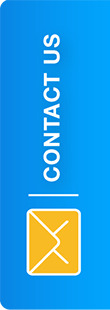How to Write a Winning Cover Letter
You still need a customised cover letter
Job hunting is rather tedious—we get it. When you spend your whole weekend combing through job portals, the thought of omitting a customised cover letter may be tempting. It may seem more convenient to adopt the ‘spray and pray’ approach, to send your resume unaccompanied by a cover letter. However, the cover letter is not a mere formality; it’s a vital aspect of your job search strategy.
Many companies today do request for a cover letter in their job listings. Even if this request is not made explicitly, it is best to include a cover letter to make a great first impression. The cover letter becomes even more essential when you’re applying for a role you don’t have much relevant experience in or when there are gaps in your resume. You can express your passion for that role or explain how that gap year contributed to your professional development in your cover letter. Don’t underestimate this opportunity!
Purpose of a cover letter
A cover letter is a one-page document addressed to the hiring manager, highlighting not only your interest in the company but also reasons why you are the ideal candidate for the role. Avoid rehashing your entire employment history in the cover letter as it is not meant to be a summarised version of your resume.
Rather, the purpose of a cover letter is to craft a compelling narrative that aligns you—with your unique blend of qualifications, skills and experience—with the role and the company you’re applying to. Besides convincing the hiring manager that you possess the necessary technical skills to perform the role, you can also demonstrate that you are a good cultural fit. Think of it as marketing yourself and your personal brand through your cover letter.
Essential components of a cover letter
Let’s cover the basics. Start the cover letter with a header which includes contact information such as your name, phone number and email address. Include the company’s details and business address underneath the header as a gesture of courtesy.
Proceed to the salutation or greeting where you address your cover letter to the hiring manager, preferably by name. Avoid the generic salutation of “To Whom It May Concern” as it shows a lack of effort to find out more about your prospective employer.
Afterwards, it is time to delve into the letter proper. The body of a cover letter typically consists of four paragraphs. You can structure it as follows:
- Introduction
- Why are you a good fit for the role?
- Why do you want to work in this company?
- Call to action
In your introductory paragraph, describe in a succinct manner who you are and why you’re writing the letter. To make your cover letter memorable, you should open with a compelling one-liner about yourself. This is your hook, whereby you show how excited you are to work in this company and what value you can add.
Once you have gotten the hiring manager’s attention, you have to sustain it throughout the rest of the cover letter. In the second body paragraph, convey why you would be an excellent hire for this particular role. Step into the hiring manager’s shoes for a moment and figure out what his or her idea of the ideal candidate is. You can do this by closely scrutinising the job description. Then, elaborate on how your past work experience and achievements meet the key qualifications the hiring manager is looking for. Substantiate your points with specific examples of projects accomplished and concrete figures wherever possible.
In the next paragraph, explain why you want to work in this particular company. Be specific—are you a fan of its products or services? Do you love their inclusive company culture? This is where you show that you have done your research and clearly understand the company’s vision and mission. Just take note that your glowing words of praise do not come across as flattery.
Finally, never end your cover letter without a clear call to action. Thank the hiring manager for his time before expressing your interest and availability in scheduling an interview. All the best in your job hunting!
Seeking your next career move?
Visit our job portal or Submit your CV.
Read more:
Time to Talk about Mental Health in the Workplace


